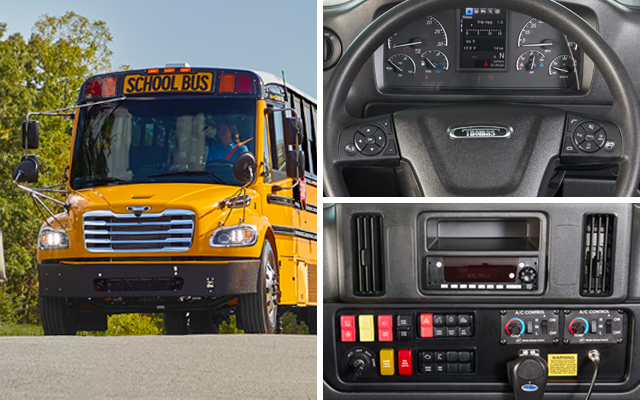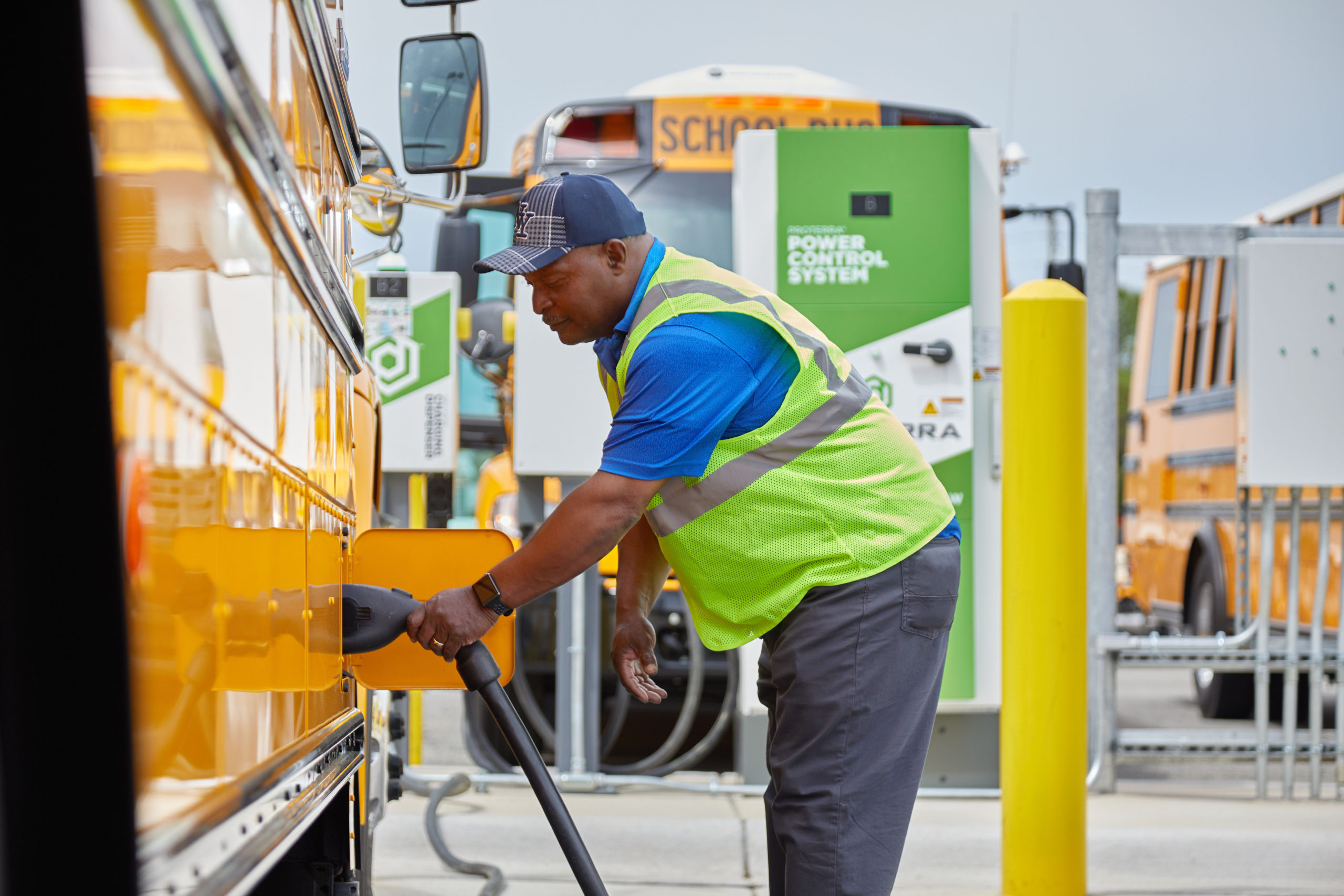
In today’s rapidly evolving industrial landscape, sustainability has become a global focus. But what does that even mean? For Thomas Built Buses, it’s about defining our commitment to our organization, our industry and the communities we serve. While our electric school bus, the Saf-T-Liner® C2 Jouley®, and its many milestones (including the recent delivery of our 1,000th) often come to…

Upgrading the C2’s User-Experience for a New Era of Drivers
Student safety is in the hands of school bus drivers. The more comfortable and confident drivers feel, the more safely they drive.
For the last 20 years, Thomas Built Buses has supplied the industry with advanced electronics engineered with safety prioritized in every detail. Our Saf-T-Liner® C2 was designed…

As electric school buses continue to gain momentum across the U.S. through federal incentives like the EPA’s Clean School Bus Program, school districts are looking for help in transitioning their traditional bus fleets to electric, including building out electric vehicle (EV) infrastructure.
Building and implementing charging infrastructure can be a daunting task, with challenges…

From Kendra Eads, VP of Engineering and Technology at Thomas Built Buses
As we gear up for the back-to-school season, it’s important to recognize the significant advancements in school bus technology that enhance the safety and well-being of our students during their daily journeys.
At Thomas Built Buses, our commitment to safety is evident in our mission and…

With many schools having received electric school bus funding from the first round of the EPA’s Clean School Bus rebate program, figuring out the charging infrastructure side of the equation can seem like a formidable task.
It’s important to consider your options and choose the approach that makes the most sense for your school’s needs and budget.
Thomas Built is here to help you make informed decisions about allocating your funding. We’ve broken down the ins and outs of EV infrastructure, including charging equipment that is available to you, the accompanying costs and which portion of those costs are covered by EPA funding.
Charging Options Available
There are three levels of charging: Level 1, Level 2 and Level 3. Levels 1 and 2 convert alternating current (AC) energy from the grid to direct current (DC) energy onboard the vehicle. Level 3 involves DC fast charging, which uses a high-voltage DC connection to charge an EV quickly, converting AC to DC energy within the charging station, and feeding power directly to the school bus battery without the need for an onboard charger to convert it.
That’s a lot of acronyms, so let’s break it down. Because AC charging equipment can be cheaper upfront, some may think it’s the better option as they can pay less for chargers (which fall under the greenlit “fleet side” of EPA fund allocation) and use leftover EPA funds towards additional infrastructure costs on the “utility side” – including the transformers, switch gears and electric meters. This is not the case.
Though the Clean School Bus funds provided by the EPA can cover much of the “fleet side” of charging infrastructure, including the vehicle and the charging units, many districts will still need additional funds to cover the “utility side.” For these costs, districts will have to utilize additional incentives outside of the Clean School Bus funds, including utility make-ready programs.
While DC charging is more expensive upfront, it is more effective in the long run by providing a quicker, more efficient charge (more than twice as fast as AC) but also because DC chargers utilize a charging management system to decrease long-term operational costs.
Managed Charging vs. Unmanaged Charging
Think of AC charging like plugging in your television. You may not be streaming but the unit is still pulling power from the grid even when it’s off.
Where an AC charger will charge the vehicle until it is unplugged, you can tell a DC charger when exactly to charge a bus (managed or “smart” charging). By managing this remotely, DC chargers provide an additional layer of cost savings by monitoring the network and then informing a charger of the best, most cost-efficient opportunity to charge the bus, avoiding peak demand hours and saving you money in the long run.
The main difference is charge load management, which involves optimizing charging loads and evenly distributing electricity to not overpower the grid and save you money, which is not currently an option for AC charging.
Contact Your Utility Provider
Beyond charging stations, districts need to consider other infrastructure needs when prepping for the switch to electric buses. Both your utility provider and your local dealer, in addition to the experts from Thomas’s Electric Bus Authority, should be your go-to resources for getting these discussions started.
When beginning to discuss infrastructure needs, your dedicated team can help analyze your fleet size and growth plans, in addition to evaluating your energy needs. They will do this by determining type and number of charging stations to install, plus whether existing structures can handle the increased amount of power an electrified fleet will demand.
Some utility companies may offer incentives and make-ready programs for things like transponders or meters because this technology is a new source of revenue for their business. However, like most of the world, utility companies move slowly and face the same lead time issues so it’s important to engage them in the process both early and often.
“It’s important to involve your utility provider in the process as early as possible,” said Mark Childers, Powertrain and Technology Sales Manager for Thomas Built Buses. “The Thomas team recommends a dedicated meter and transformer for your bus fleet. This creates a level of transparency in your power bill. By having a meter specifically for a district’s field of EV chargers, districts will know exactly how much they are paying that month for charging their buses as opposed to those costs being layered into the overall power bill.”
Available Resources
Through the Electric Bus Authority (EBA), Thomas Built Buses has experts solely dedicated to charging infrastructure consultancy services.
This group has fostered relationships with EVSE (electric vehicle supply equipment) providers and can meet with your district to evaluate your operations, providing route analysis, site plans and additional reports to aid you in electrification efforts. The EBA can also help districts understand what utility incentives are available in their area and how to engage their schoolboards for additional funding.
To get started on the road to EV or to explore infrastructure options for your fleet or district, contact the Electric Bus Authority at Thomas Built Buses.
